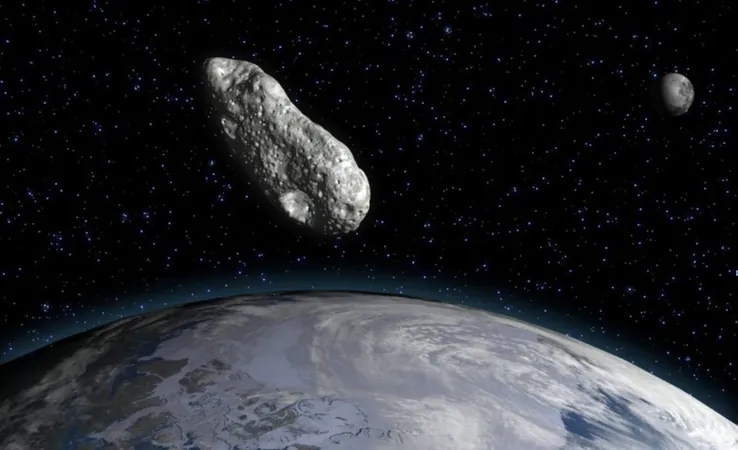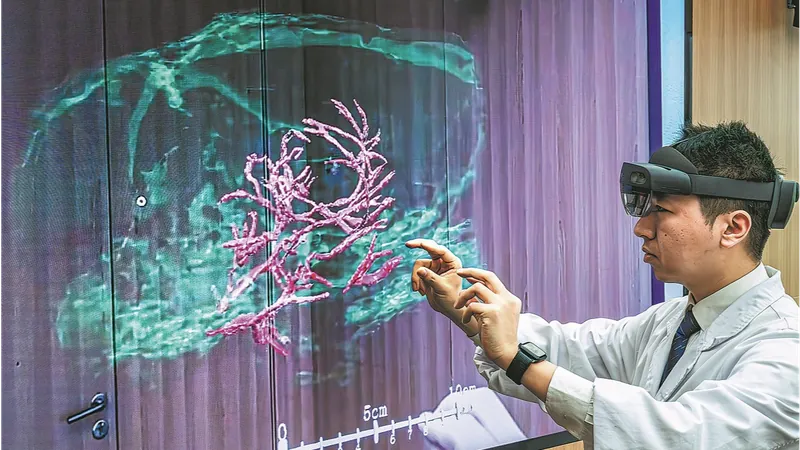
Fleet Space Sets Its Sights on Asteroid Apophis for Game-Changing Mission
2025-09-23
Author: Li
Fleet Space and ExLabs Partner for Astounding Asteroid Mission
In a thrilling leap for space exploration, Fleet Space Technologies, Australia's trailblazing space exploration firm, has inked a groundbreaking memorandum with ExLabs. Their ambitious plan? To launch an off-world exploration mission to asteroid Apophis under the ApophisExL initiative, slated for 2028. This partnership aims to propel asteroid research, bolster planetary defense mechanisms, and pave the way for a thriving space-resources economy.
Apophis: The Asteroid with a Close Encounter
With a diameter of approximately 340 meters, Apophis made headlines after its discovery in 2004 due to initial worries about its potential collision course with Earth. However, on April 13, 2029, this intriguing rock will come alarmingly close, flying just 32,000 kilometers above our planet—within the realm of geostationary satellites. Such a rare close approach occurs only once every millennium, providing a golden opportunity for scientists.
Unlocking Resources and Defense Secrets
Not only does Apophis offer a unique chance to study its trajectory, but research suggests it may be rich in precious metals and minerals capable of supporting off-world infrastructure and vital industries right here on Earth. Matt Pearson, Fleet Space's Chief Exploration Officer, emphasizes the dual purpose of asteroids: 'They are trillion-dollar floating orebodies vital for humanity’s off-world aspirations, and they pose risks that necessitate robust study for planetary defense.' His vision? To use advanced geoscience to develop proactive strategies for asteroid prospecting.
The Importance of Surveying Apophis
Surveying Apophis could become a game-changer for the scientific, economic, and strategic plans necessary for successful planetary defense and resource procurement beyond Earth. Surprisingly, studies indicate that some near-Earth asteroids contain more metals like iron, nickel, and cobalt than can be found on our planet, making them highly valuable.
Equipping for Tomorrow's Challenges
As part of the ApophisExL mission, Fleet Space will deploy its cutting-edge geophysical sensing technology via ExLabs' mothership to gather crucial data about the asteroid. This information is expected to not only enhance asteroid prospecting but also enrich global strategies for planetary defense.
Expanding Horizons: From Moon to Mars and Beyond
Fleet plans to adapt its advanced ExoSphere system, currently helping major mining firms locate mineral deposits on Earth, for use in off-world missions. Additionally, the company will utilize its SPIDER lunar seismic system in Firefly Aerospace's Blue Ghost Mission 2 to investigate the Moon's underground secrets.
The Future of Resource Utilization in Space
Gerrit Olivier, Fleet Space's Chief Science Officer, emphasizes the necessity of precision in studying asteroids: 'We need sophisticated data to characterize their attributes and understand how to harness these valuable materials for our endeavors in space.' This mission could set the cornerstone for a proactive approach to planetary defense and the sustainable use of off-world resources.
Building Global Partnerships for Broader Impact
Fleet is not working alone in this venture; it collaborates with renowned institutions like Stanford Mineral-X, the MIT Space Exploration Initiative, and NASA to advance techniques in subsurface sensing and imaging technologies tailored for lunar and Martian environments. Their recent US$150 million funding boost and the establishment of a new manufacturing hub aim to meet the growing demands of space exploration.
A Pioneering Leap for Humanity's Future in Space
The studies at analogue sites like the Haughton Impact Crater, used in conjunction with NASA to trial technologies, will complement the data gathered from Asteroid Apophis. Fleet Space and ExLabs envision that ApophisExL will not only sharpen planetary defense strategies but also unlock economic and scientific treasures within near-Earth objects, ultimately supporting a continuous human presence in space.


 Brasil (PT)
Brasil (PT)
 Canada (EN)
Canada (EN)
 Chile (ES)
Chile (ES)
 Česko (CS)
Česko (CS)
 대한민국 (KO)
대한민국 (KO)
 España (ES)
España (ES)
 France (FR)
France (FR)
 Hong Kong (EN)
Hong Kong (EN)
 Italia (IT)
Italia (IT)
 日本 (JA)
日本 (JA)
 Magyarország (HU)
Magyarország (HU)
 Norge (NO)
Norge (NO)
 Polska (PL)
Polska (PL)
 Schweiz (DE)
Schweiz (DE)
 Singapore (EN)
Singapore (EN)
 Sverige (SV)
Sverige (SV)
 Suomi (FI)
Suomi (FI)
 Türkiye (TR)
Türkiye (TR)
 الإمارات العربية المتحدة (AR)
الإمارات العربية المتحدة (AR)